Introduction
Sukkur, nestled along the banks of the Indus River, stands as a vibrant city in the heart of Pakistan, celebrated for its captivating blend of history, culture, and, most notably, its gastronomic treasures. As we delve into the intricate tapestry of “food in Sukkur,” the city’s culinary landscape emerges as a tapestry woven with flavors from centuries of diverse influences. This article aims to immerse you in the rich and diverse food culture that Sukkur proudly presents, inviting you on a gustatory adventure through its bustling streets and renowned eateries.
The food in Sukkur reflects a harmonious fusion of regional and historical influences, yielding a remarkable array of dishes that tantalize the taste buds and capture the essence of the city’s soul. From the aromatic allure of Sindhi Biryani to the succulent Sajji, Sukkur’s gastronomic offerings are as diverse as they are delectable. As we traverse through this culinary journey, we’ll uncover the tales behind these iconic dishes and the flavors that define Sukkur’s culinary identity. So, let’s embark on this flavorful expedition and uncover the hidden gems of “food in Sukkur” waiting to be savored.
List of Food in Sukkur
| S. No | Name of Food/Dish | Category | Price Range (USD & EUR) | Main Ingredients (if available) |
|---|---|---|---|---|
| 1 | Sindhi Biryani | Savoury | $5-$15 USD, €4-€12 EUR | Rice, Meat, Spices |
| 2 | Sajji | Meat dish | $8-$20 USD, €6-€16 EUR | Whole Roasted Meat |
| 3 | Saag | Veg dish | $4-$10 USD, €3-€8 EUR | Leafy Greens, Spices |
| 4 | Aloo Tuk | Veg dish | $3-$8 USD, €2-€6 EUR | Potatoes, Spices |
| 5 | Dal Pakwan | Veg dish | $4-$9 USD, €3-€7 EUR | Lentils, Bread |
| 6 | Sindhi Curry | Savoury | $6-$12 USD, €5-€10 EUR | Meat/Vegetables, Spices |
| 7 | Sindhi Pulao | Savoury | $5-$14 USD, €4-€11 EUR | Rice, Meat, Spices |
| 8 | Bhuga Chawal | Savoury | $4-$10 USD, €3-€8 EUR | Rice, Onions, Spices |
| 9 | Kebabs | Meat dish | $6-$18 USD, €5-€15 EUR | Meat, Spices |
| 10 | Palak Paneer | Veg dish | $5-$12 USD, €4-€10 EUR | Spinach, Paneer, Spices |
| 11 | Chicken Karahi | Meat dish | $7-$15 USD, €6-€12 EUR | Chicken, Tomatoes, Spices |
| 12 | Kheer | Sweet | $3-$8 USD, €2-€6 EUR | Rice, Milk, Sugar, Nuts |
| 13 | Chapli Kebab | Meat dish | $6-$16 USD, €5-€13 EUR | Ground Meat, Spices |
| 14 | Bhindi Masala | Veg dish | $4-$11 USD, €3-€9 EUR | Okra, Spices |
| 15 | Daal Chawal | Veg dish | $4-$9 USD, €3-€7 EUR | Lentils, Rice, Spices |
| 16 | Chicken Handi | Meat dish | $8-$18 USD, €7-€15 EUR | Chicken, Cream, Spices |
| 17 | Nihari | Meat dish | $7-$16 USD, €6-€13 EUR | Meat, Spices |
| 18 | Haleem | Savoury | $5-$12 USD, €4-€10 EUR | Wheat, Meat, Lentils, Spices |
| 19 | Gajar Ka Halwa | Sweet | $4-$10 USD, €3-€8 EUR | Carrots, Milk, Sugar, Nuts |
| 20 | Paya | Meat dish | $6-$15 USD, €5-€12 EUR | Trotters, Spices |
| 21 | Seekh Kebab | Meat dish | $5-$14 USD, €4-€11 EUR | Ground Meat, Spices |
| 22 | Reshmi Kebab | Meat dish | $6-$16 USD, €5-€13 EUR | Chicken, Cream, Spices |
| 23 | Fish Tikka | Seafood | $8-$20 USD, €6-€16 EUR | Fish, Spices |
| 24 | Chicken Tikka | Meat dish | $7-$17 USD, €6-€14 EUR | Chicken, Spices |
| 25 | Chicken Malai Boti | Meat dish | $7-$16 USD, €6-€13 EUR | Chicken, Cream, Spices |
| 26 | Tandoori Chicken | Meat dish | $7-$18 USD, €6-€15 EUR | Chicken, Yogurt, Spices |
| 27 | Rabri | Sweet | $4-$9 USD, €3-€7 EUR | Milk, Sugar, Nuts |
| 28 | Paratha | Savoury | $2-$6 USD, €2-€5 EUR | Wheat, Ghee |
| 29 | Samosa | Savoury | $1-$3 USD, €1-€2 EUR | Pastry, Potato/Meat Filling |
| 30 | Aloo Samosa | Savoury | $1-$3 USD, €1-€2 EUR | Pastry, Potato Filling |
| S. No | Name of Food/Dish | Category | Price Range (USD & EUR) | Main Ingredients (if available) |
Note: The price range provided is approximate and may vary depending on the restaurant or vendor.
Sindhi Biryani: Sindhi Biryani is a fragrant and spicy rice dish that originates from the Sindh region of Pakistan. It’s a vibrant mix of Basmati rice, marinated meat (usually beef or chicken), and aromatic spices like cumin, coriander, and cloves, along with potatoes, tomatoes, and onions. The biryani is cooked in layers, infusing the rice and meat with the flavors of the spices. It is often garnished with fresh coriander and served with raita (yogurt-based side dish) or salad.
Sajji: Sajji is a traditional Balochi dish popular in Sukkur made from whole roasted lamb or chicken. The meat is marinated with a blend of local spices, such as salt, red chili powder, and sometimes yogurt, giving it a rich and flavorful taste. It’s then skewered and roasted over an open flame or in a tandoor (clay oven). The slow cooking process ensures the meat remains tender and succulent. Sajji is often served with naan bread and a tangy green chutney.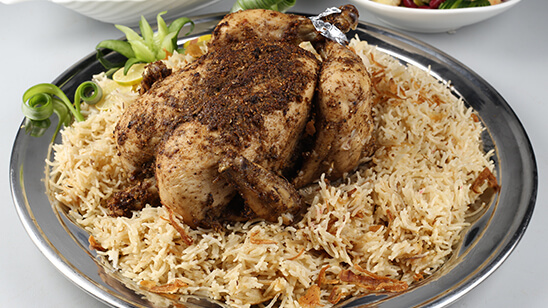
Kebabs: Kebabs in Sukkur encompass a variety of skewered and grilled meat dishes rich in flavors. These can include Seekh Kebabs, Reshmi Kebabs, and Chapli Kebabs. Seekh Kebabs are minced meat (usually beef or chicken) mixed with spices like coriander, cumin, and chili, then shaped onto skewers and grilled to perfection. Reshmi Kebabs are a milder variation made with tenderized meat, cream, and a blend of aromatic spices. Chapli Kebabs, originating from the Khyber Pakhtunkhwa region, consist of minced meat patties blended with spices, tomatoes, and green chilies.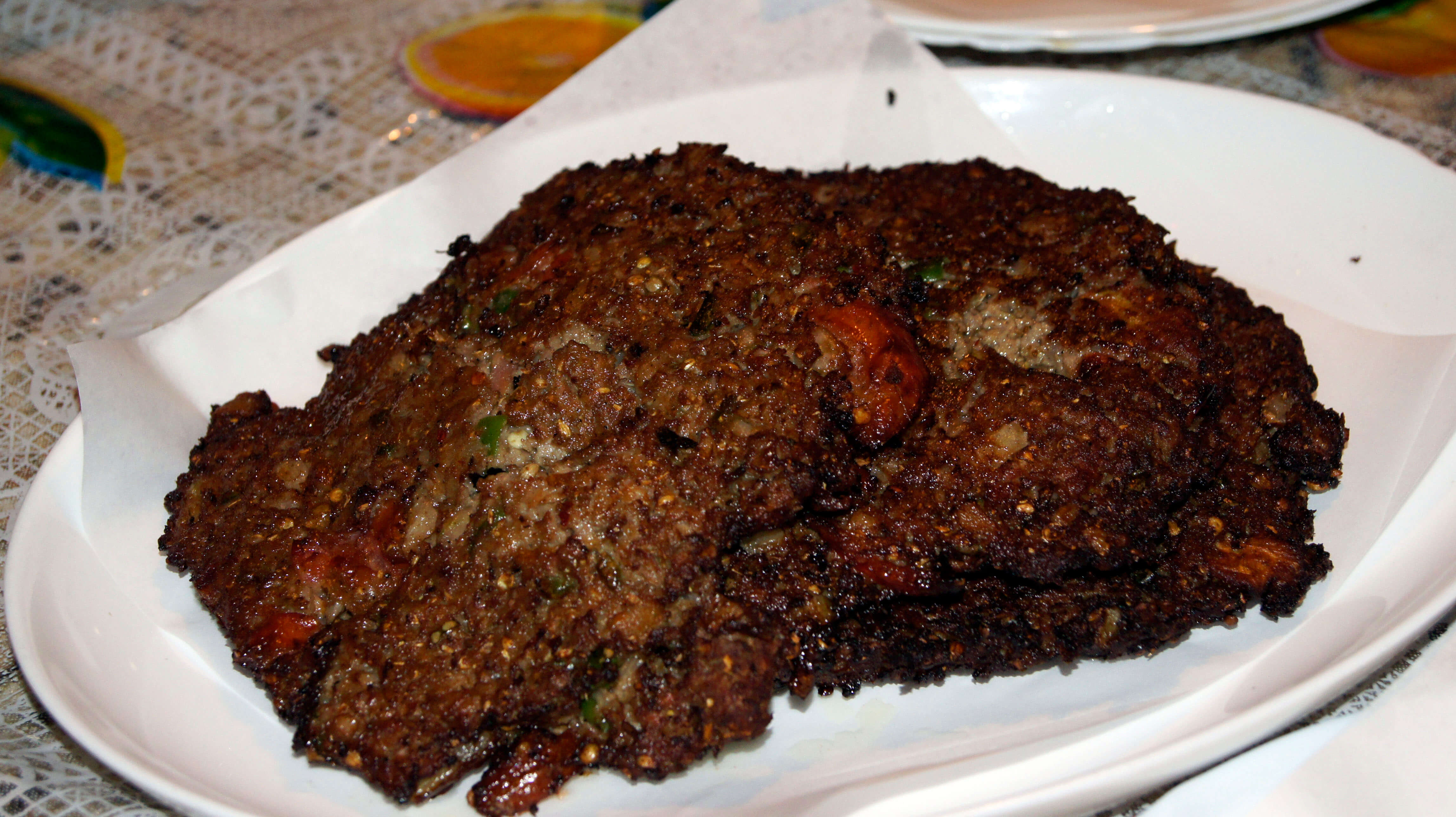
Palak Paneer: Palak Paneer is a classic vegetarian dish consisting of spinach (palak) and cubes of Indian cottage cheese (paneer) cooked in a rich, creamy gravy. The spinach is blended into a smooth puree and combined with sautéed onions, tomatoes, garlic, and a mix of spices such as cumin, garam masala, and turmeric. The paneer is then added to the spinach gravy, creating a dish that’s both nutritious and flavorful, often served with naan or rice.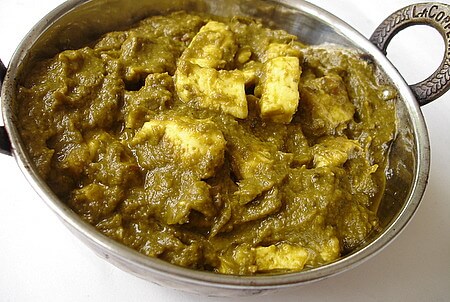
Chicken Karahi: Chicken Karahi is a popular Pakistani curry cooked in a karahi (wok-like cooking vessel). It features tender chicken pieces cooked with tomatoes, onions, garlic, ginger, and a medley of aromatic spices like cumin, coriander, and red chili powder. The dish gets its distinct flavor from the method of cooking in the karahi, enhancing the flavors of the ingredients. It’s typically garnished with fresh cilantro and served with naan or roti.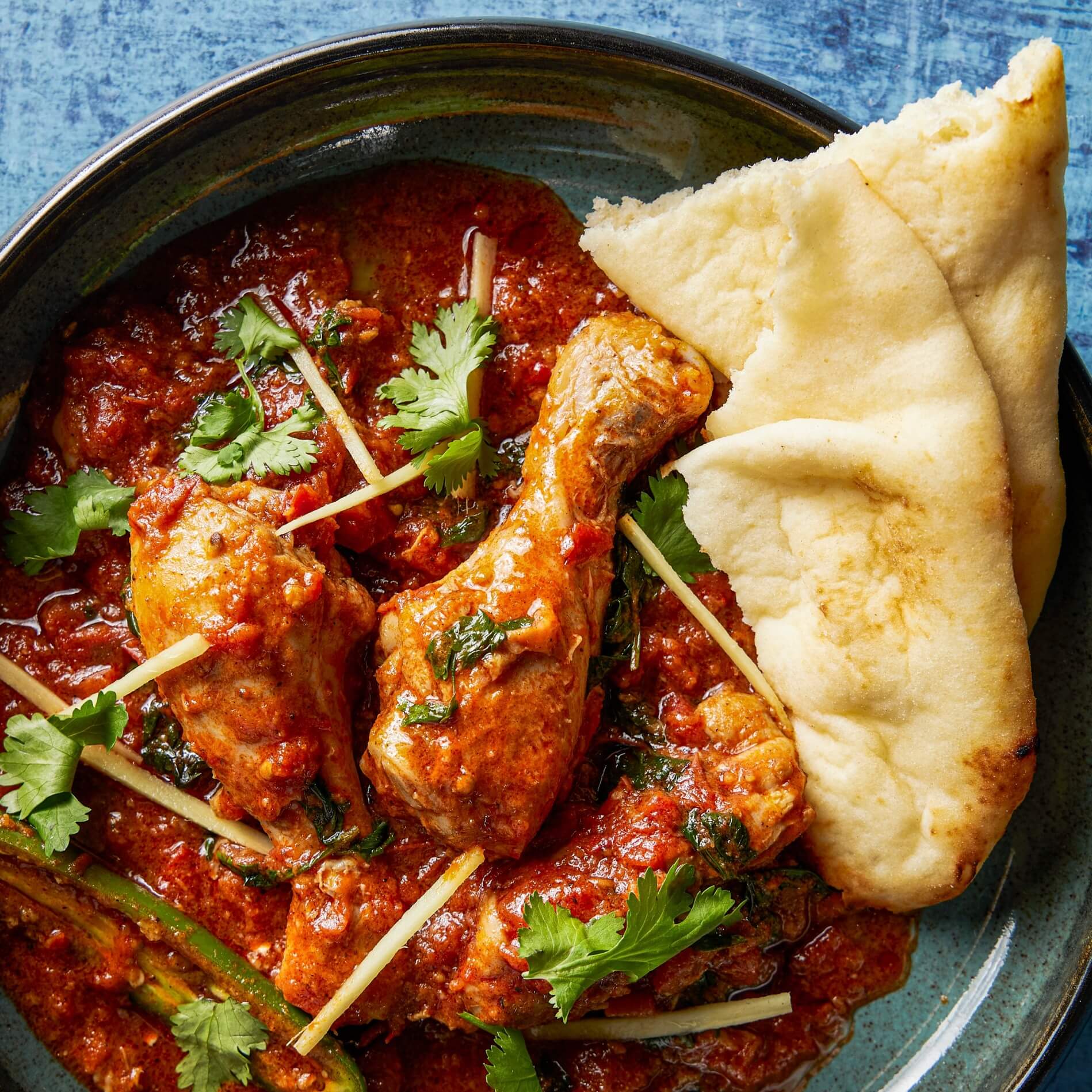
Kheer: Kheer is a beloved dessert in Pakistan made from simmering rice, milk, and sugar, and sometimes flavored with cardamom, saffron, or nuts. The rice is cooked until it softens and absorbs the milk, creating a creamy and aromatic pudding-like texture. It’s often served chilled and garnished with almonds, pistachios, or rose petals, making it a comforting and indulgent sweet treat.
Chapli Kebab: Chapli Kebab is a Pashtun-style minced meat patty that’s spiced and pan-fried. It’s typically made with ground meat (beef or sometimes chicken) mixed with various spices like coriander, cumin, chili powder, and pomegranate seeds. The patties are flattened and shallow-fried, resulting in a crispy exterior and a juicy, flavorful interior. Chapli Kebabs are often served with naan, yogurt, and fresh salad.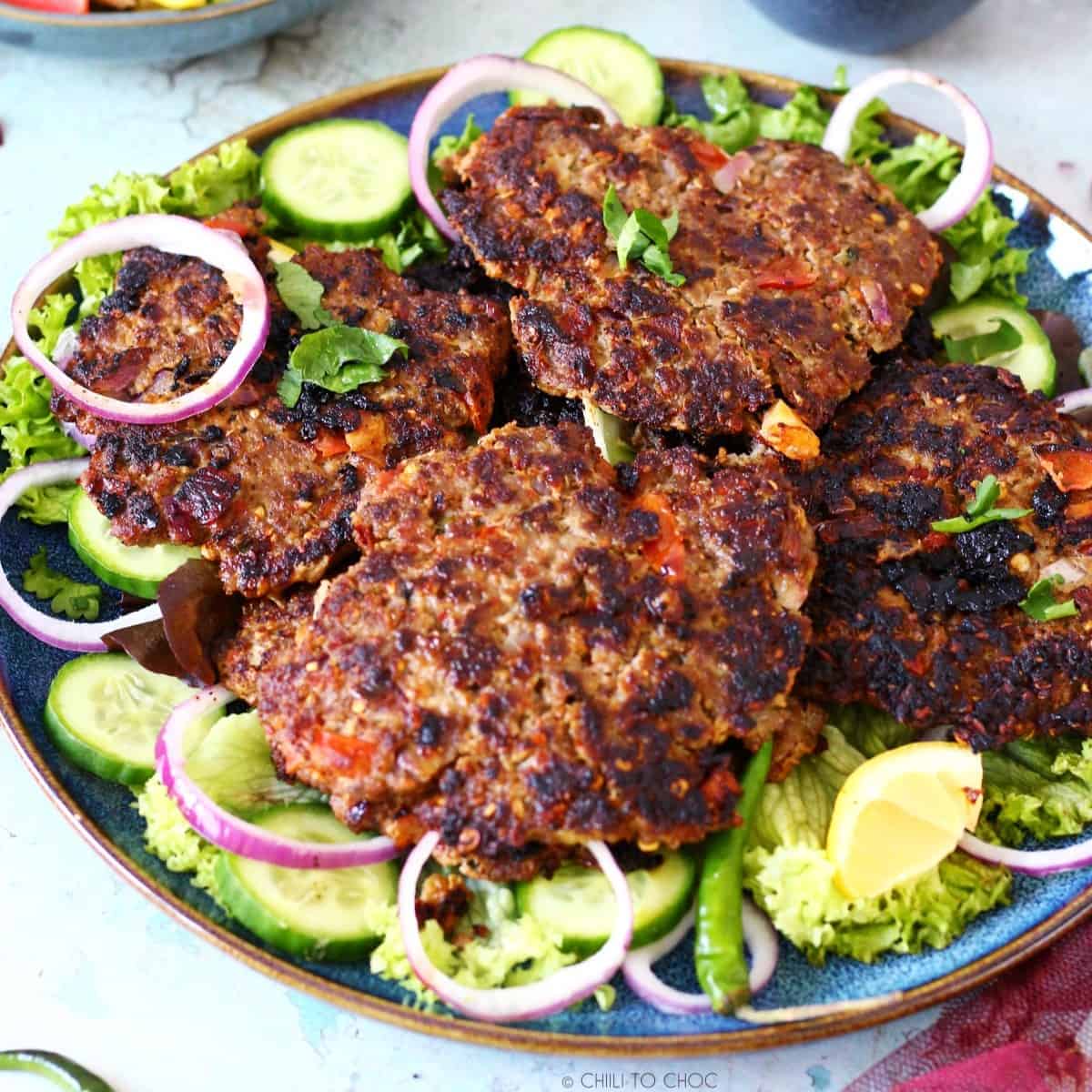
Bhindi Masala: Bhindi Masala is a vegetarian dish comprising okra (bhindi) cooked with onions, tomatoes, and spices. The okra is usually stir-fried until tender but still retains its slight crunch. The spices include turmeric, cumin, coriander, and garam masala, giving the dish a delightful blend of flavors. It’s a popular side dish served with roti or rice.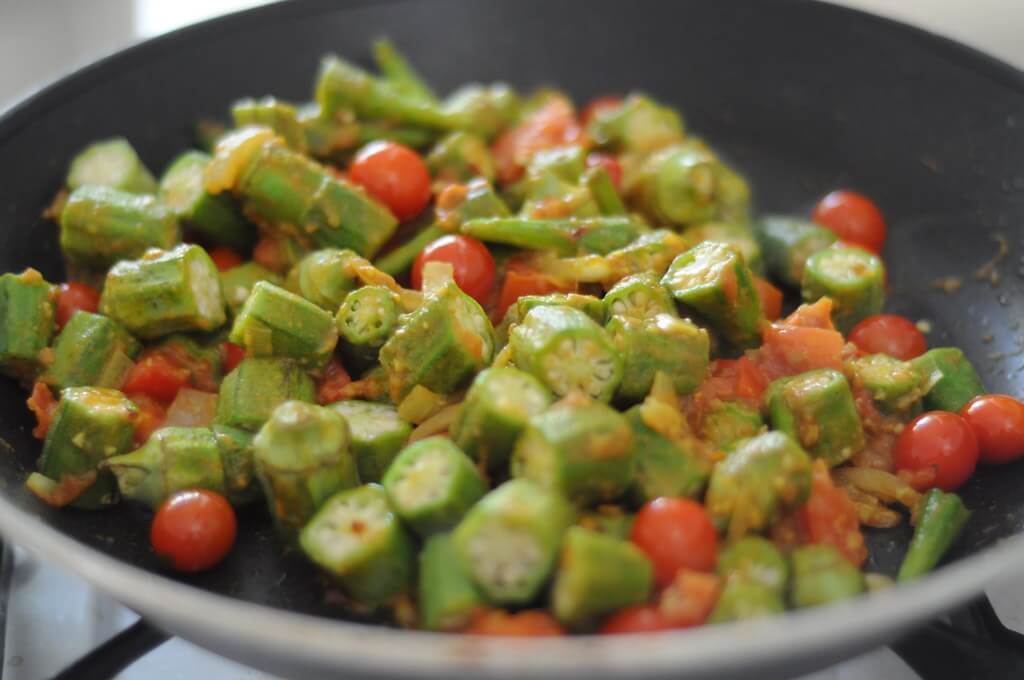
Daal Chawal: Daal Chawal is a simple yet flavorful dish consisting of lentils (daal) served with rice (chawal). The lentils are cooked with onions, tomatoes, garlic, and spices such as turmeric, cumin, and red chili powder, resulting in a wholesome and comforting dish. Daal Chawal is a staple meal in Pakistani households and is often accompanied by pickles or yogurt.
Nihari: Nihari is a slow-cooked stew made with tender meat (usually beef or mutton), simmered overnight with bone marrow, spices, and herbs. The key spices include cinnamon, cardamom, cloves, and bay leaves, lending a rich and aromatic flavor. It’s typically enjoyed as a breakfast dish and served with naan or sheermal (sweet bread) along with garnishes like fresh ginger, green chilies, and lemon.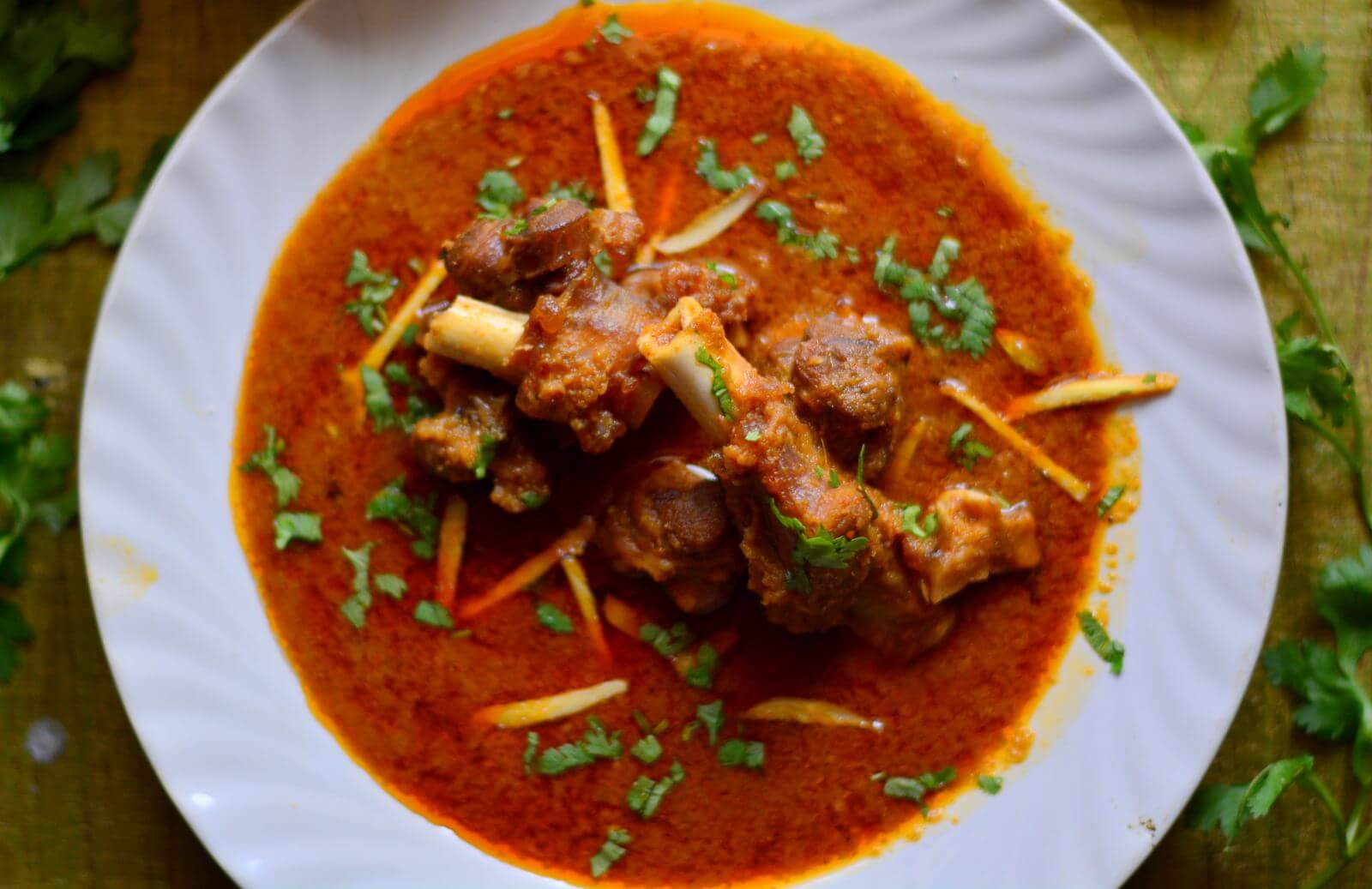
Haleem: Haleem is a traditional thick stew made from a blend of lentils, wheat, barley, and meat (usually chicken, beef, or mutton). The ingredients are slow-cooked for hours until they form a porridge-like consistency. A mix of aromatic spices like cumin, coriander, cinnamon, and cloves adds depth to the dish. Haleem is often garnished with fried onions, lemon juice, and fresh coriander, making it a hearty and flavorsome meal, especially during Ramadan.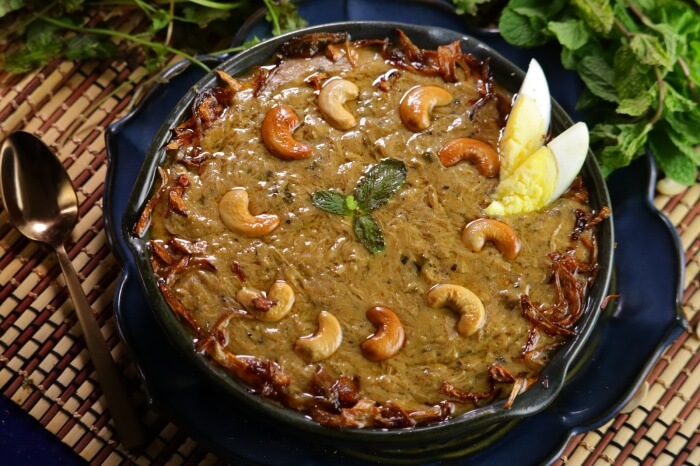
Gajar Ka Halwa: Gajar Ka Halwa is a classic Indian and Pakistani dessert made from grated carrots cooked in ghee (clarified butter), milk, and sugar. It’s infused with cardamom, garnished with nuts like almonds and pistachios, and sometimes flavored with saffron, giving it a rich and delightful taste. Gajar Ka Halwa is often served warm, especially during festive occasions and celebrations.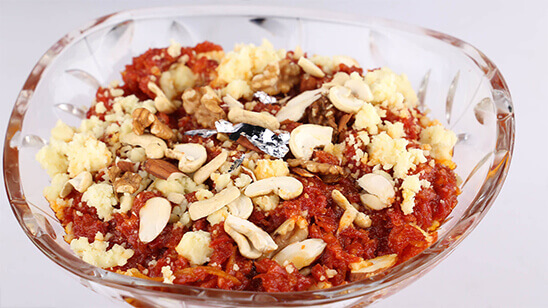
Paya: Paya is a flavorful stew made from the trotters of a cow, goat, or lamb cooked with spices until the meat becomes tender and releases its flavors into the thick broth. The key spices include cloves, cardamom, cinnamon, and bay leaves, creating a rich and aromatic taste. Paya is often served with naan or rice and is considered a delicacy in many South Asian cuisines.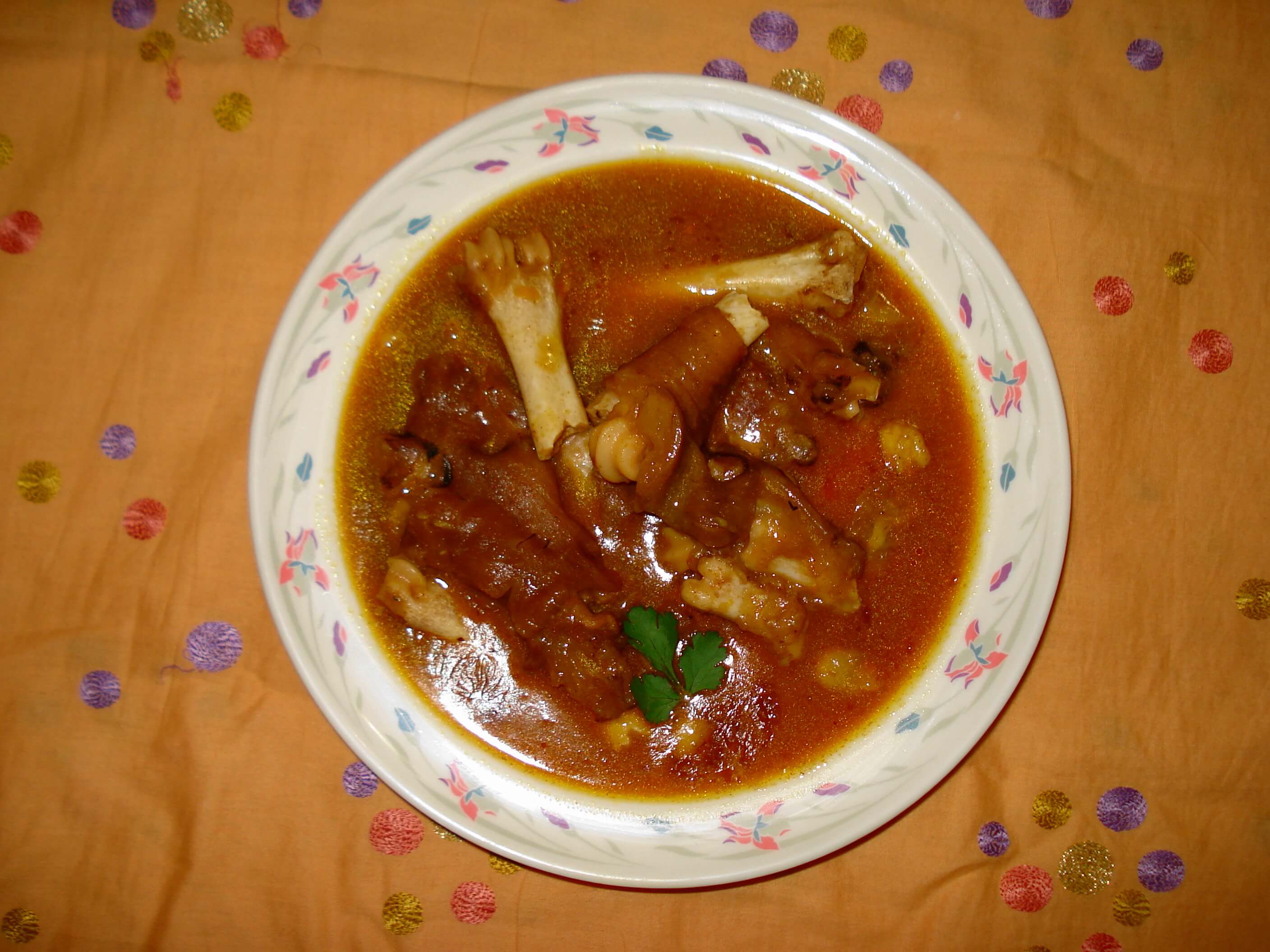
Reshmi Kebab: Reshmi Kebab is a type of kebab made with minced meat (often chicken) marinated in a mixture of yogurt, cream, spices, and sometimes raw papaya for tenderness. The name “Reshmi” translates to silk, indicating these kebabs’ smooth and soft texture. They’re typically grilled or pan-fried until they acquire a golden-brown color, resulting in juicy and succulent kebabs, often served as an appetizer or a side dish.
Fish Tikka: Fish Tikka is a popular dish where fish fillets, often from freshwater fish like trout or catfish, are marinated in a mixture of yogurt, spices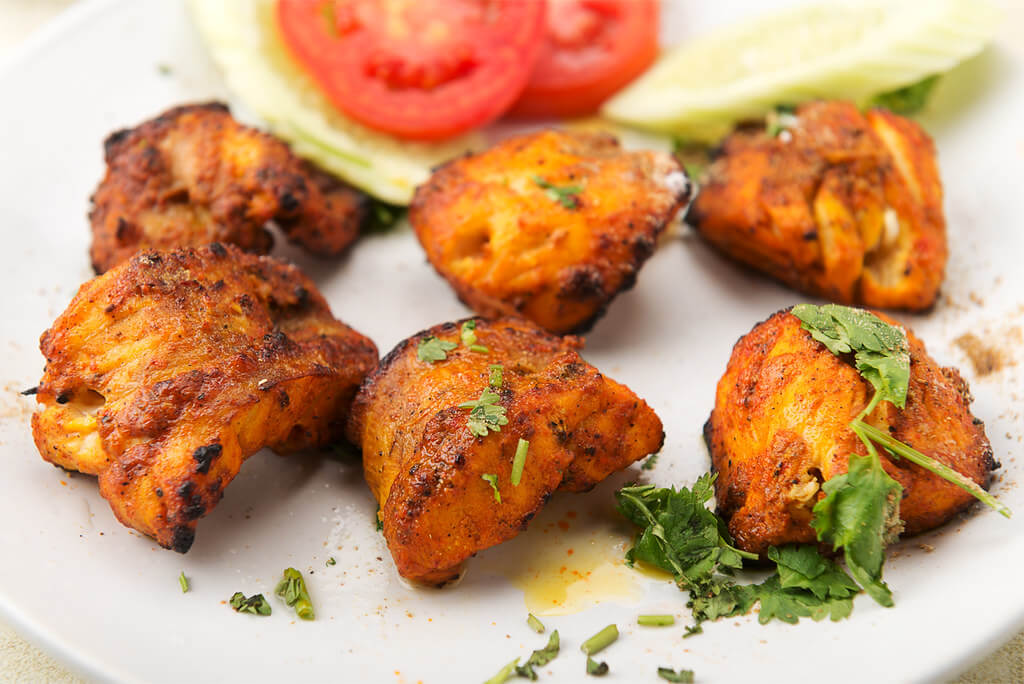
Tandoori Chicken: Tandoori Chicken is a flavorful dish made by marinating chicken pieces in a blend of yogurt and spices, including garam masala, cumin, coriander, turmeric, chili powder, and ginger-garlic paste. The marinated chicken is then cooked in a tandoor (clay oven), giving it a smoky and charred exterior while keeping the meat tender and juicy. It’s often served with fresh salad, mint chutney, and lemon wedges.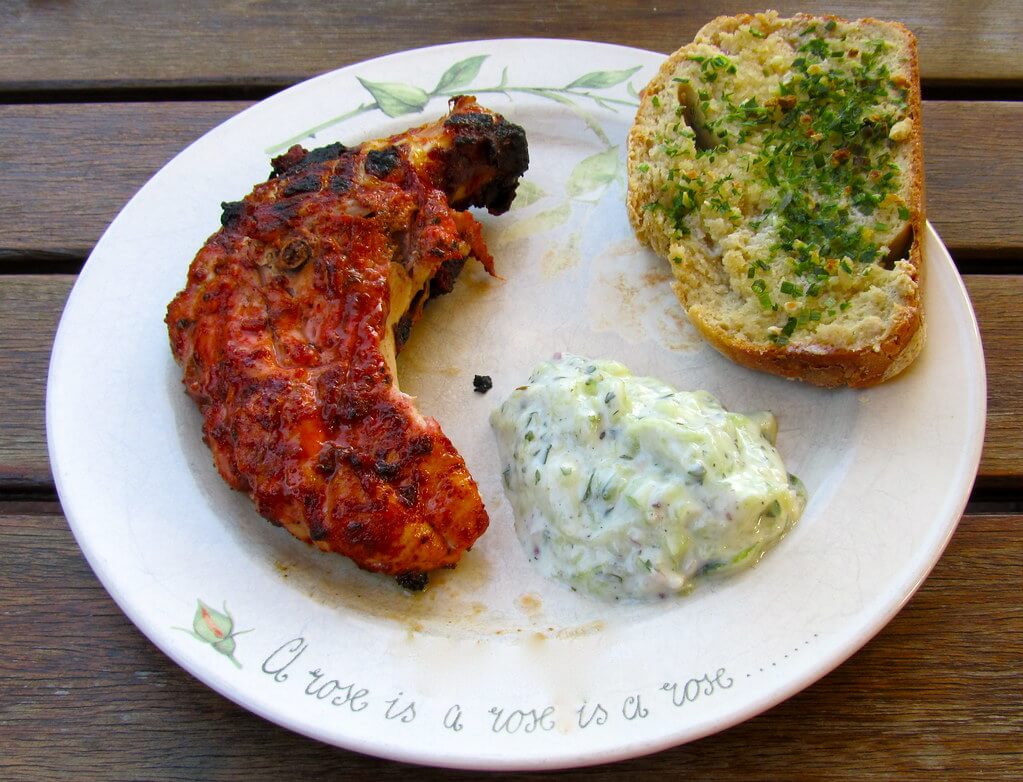
Rabri: Rabri is a rich and creamy Indian dessert made by simmering milk for a prolonged period until it thickens and reduces, resulting in a dense, sweetened milk mixture. It’s flavored with cardamom, saffron, and sometimes rose water, imparting a delightful aroma. Rabri is traditionally garnished with chopped nuts like almonds, pistachios, or silver leaf (varak) and enjoyed chilled.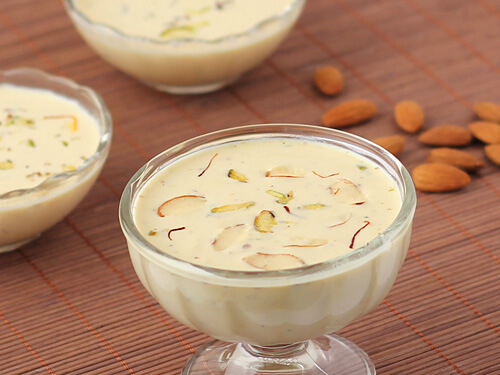
Paratha: Paratha is a flaky, unleavened Indian flatbread made by kneading wheat flour, rolling it into layers, and cooking it on a grill with ghee or oil. It can be stuffed with various fillings like spiced mashed potatoes (aloo paratha), paneer (paneer paratha), or mixed vegetables. Parathas are crispy on the outside and soft on the inside, often served with yogurt, pickles, or curry.
Samosa: Samosa is a popular savory pastry filled with spiced potatoes, peas, onions, and sometimes minced meat or lentils. The filling is encased in a thin, crispy pastry dough made from all-purpose flour, and then deep-fried until golden brown. Samosas are enjoyed as a snack and are commonly served with tamarind or mint chutney.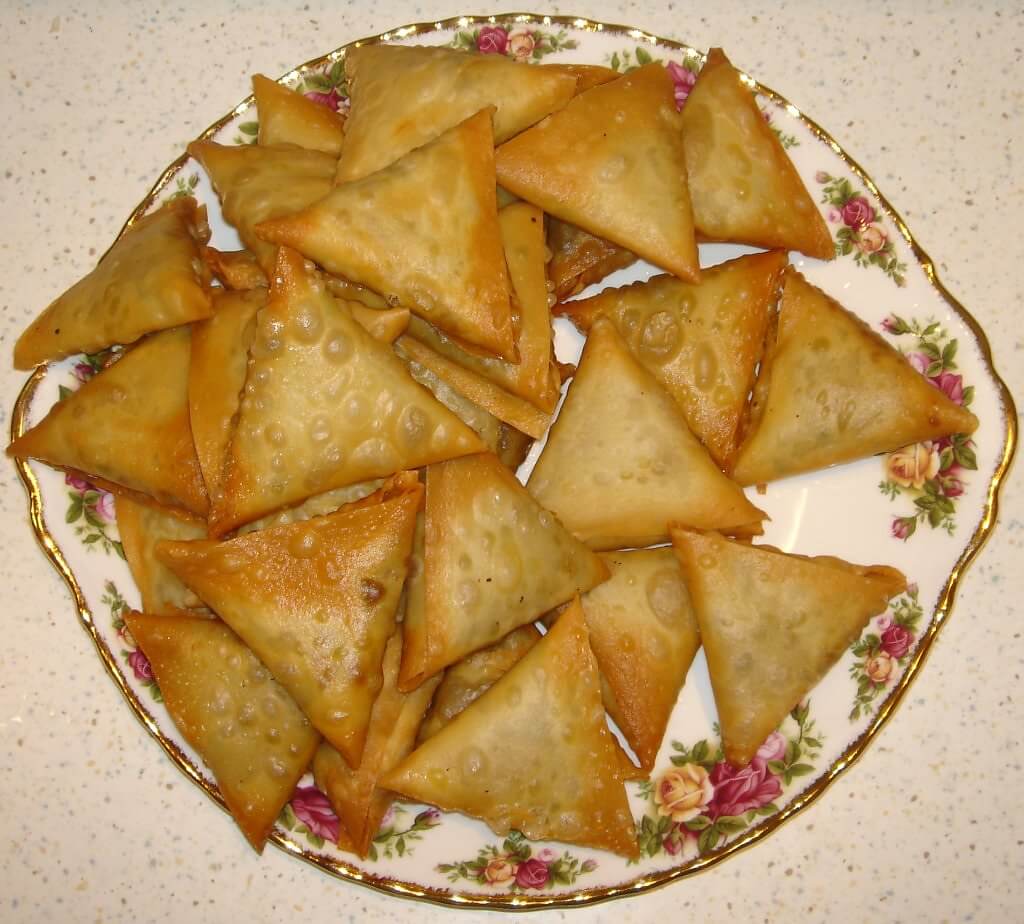
Aloo Samosa: Aloo Samosa is a variation of the classic samosa, where the filling primarily consists of seasoned mashed potatoes mixed with spices like cumin, coriander, turmeric, and garam masala. It follows the same preparation method as the traditional samosa, resulting in a crispy outer layer and a flavorful, potato-filled interior.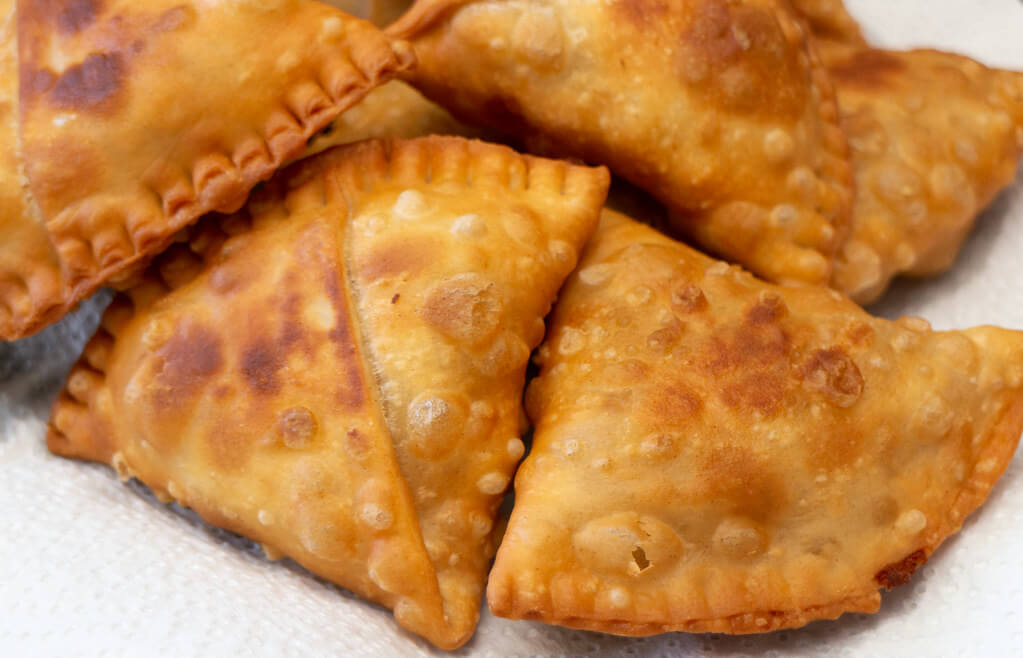
Saag: Saag is a dish made from leafy greens, primarily spinach, and mustard greens (sarson ka saag). The greens are finely chopped and cooked with onions, tomatoes, ginger, garlic, and a blend of spices such as cumin, coriander, and turmeric. Saag is typically simmered until the greens are tender and served with roti or rice.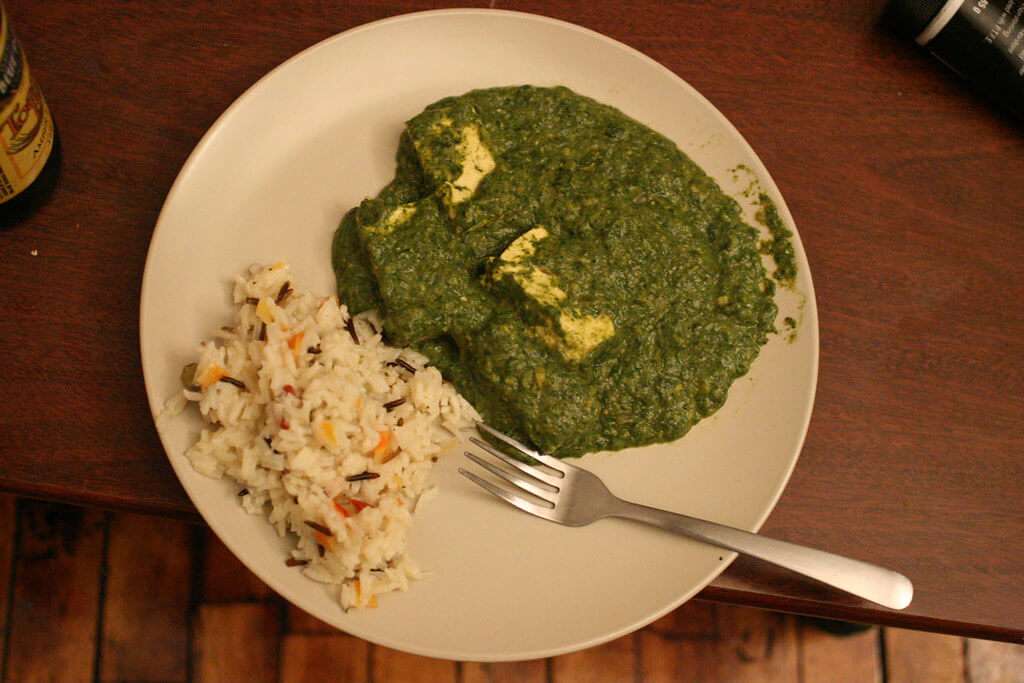
Aloo Tuk: Aloo Tuk is a Sindhi dish consisting of crispy fried potato slices. The potatoes are cut into thick chunks or slices, seasoned with spices like turmeric, red chili powder, and chaat masala, then deep-fried until they achieve a golden-brown color and crisp texture. Aloo Tuk is commonly served as a side dish or snack.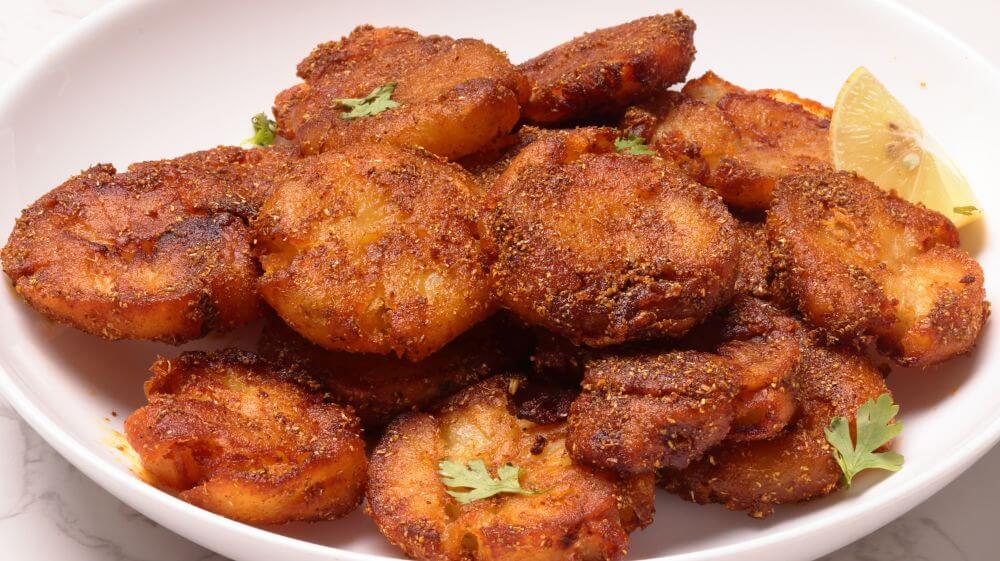
Sindhi Curry: Sindhi Curry is a tangy and spicy curry prepared with a medley of vegetables like okra, potatoes, tomatoes, drumsticks, and sometimes chickpea flour dumplings (besan pakoras). The curry base is made with tamarind pulp, asafoetida, red chili powder, turmeric, and other spices, giving it a distinctive sour flavor. It’s usually served with rice or bread.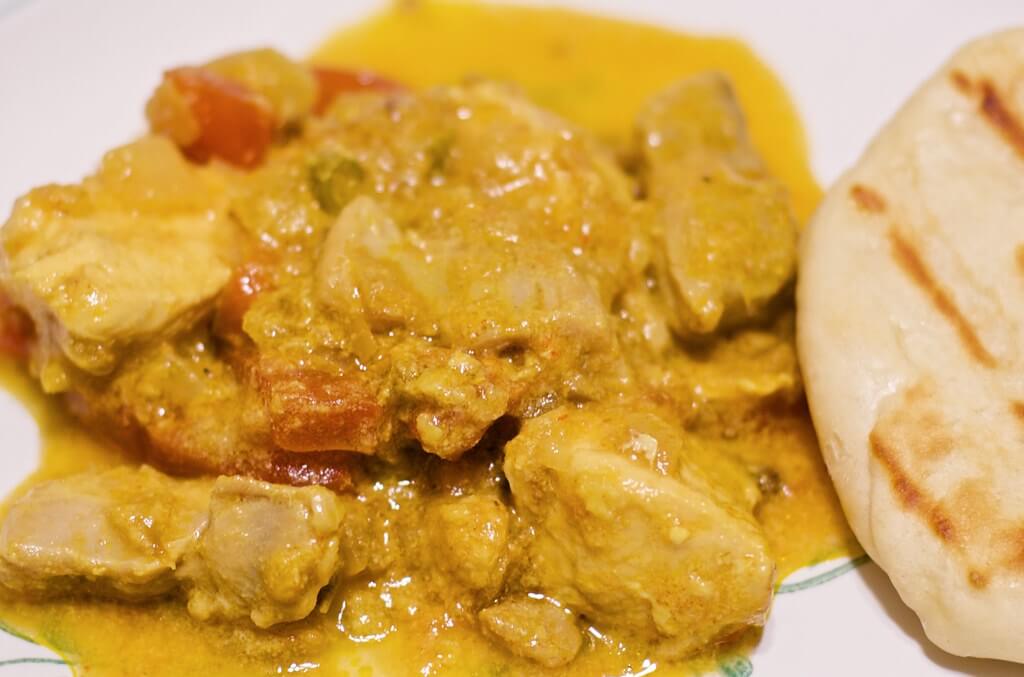
Sindhi Pulao: Sindhi Pulao is a fragrant rice dish cooked with aromatic spices, caramelized onions, and a mix of vegetables and meat. The rice is usually sautéed with onions, tomatoes, ginger-garlic paste, and a blend of spices like cumin, coriander, and bay leaves. It’s then cooked with either chicken, mutton, or vegetables, resulting in a flavorful and colorful rice preparation.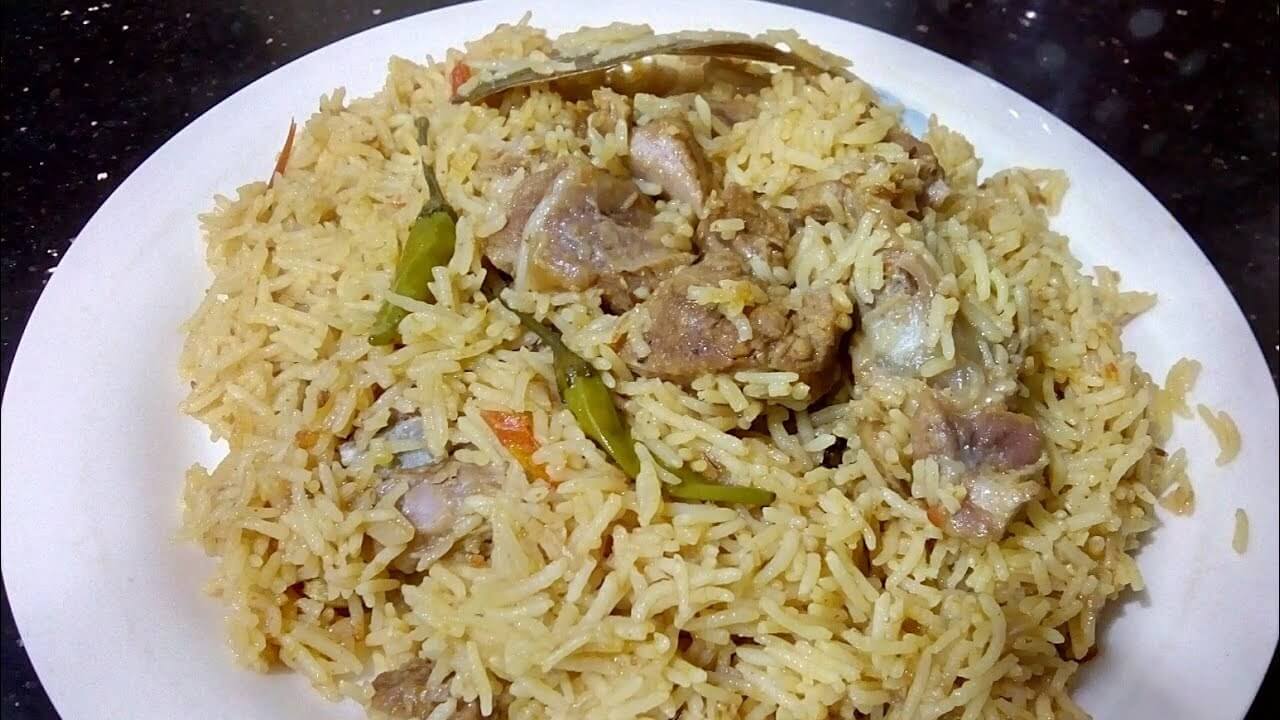
Bhuga Chawal: Bhuga Chawal is a Sindhi dish made with rice that is first sautéed in ghee or oil along with onions until the rice grains turn golden brown. The rice is then cooked with water or broth and seasoned with whole spices like cloves, cinnamon, and cardamom. Bhuga Chawal has a nutty aroma and is often served as a side dish alongside curries or lentils.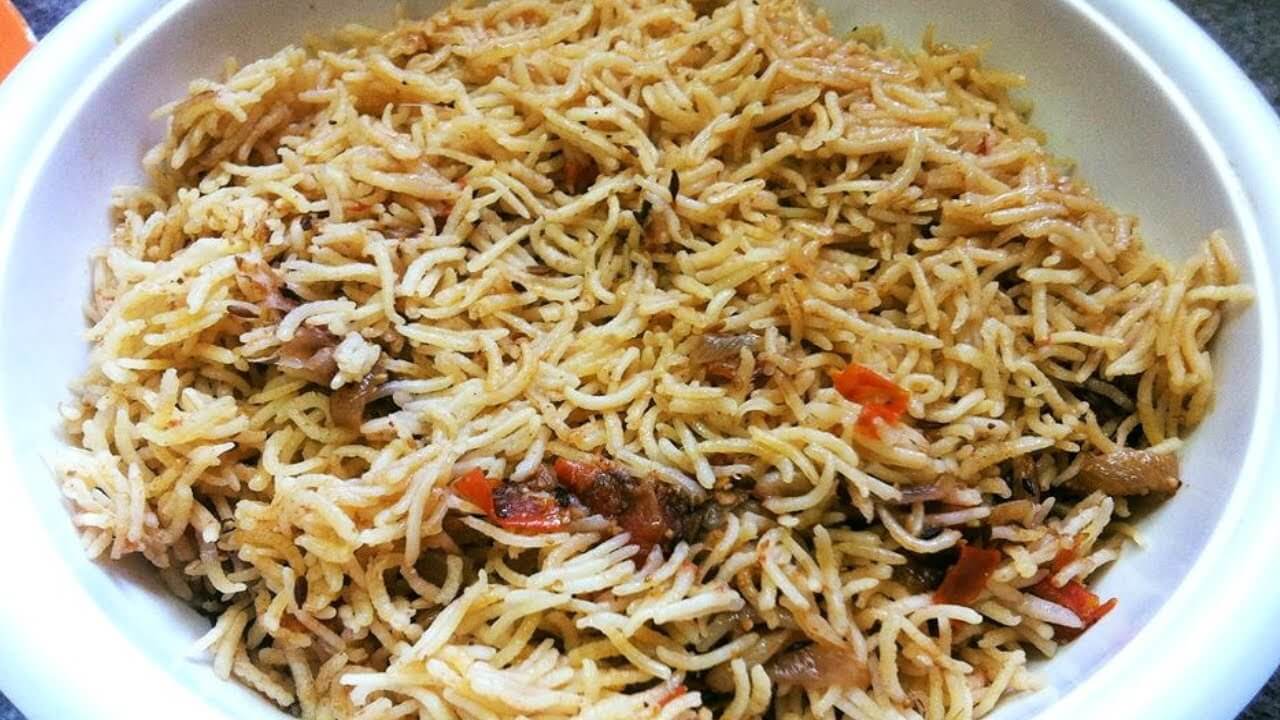
Chicken Handi: Chicken Handi is a creamy and indulgent dish where chicken pieces are cooked in a handi (traditional clay pot) with a luscious gravy made from tomatoes, onions, yogurt, cream, and a blend of spices. The key to its rich flavor lies in slow cooking and the use of traditional spices like garam masala, coriander, and fenugreek leaves.
Seekh Kebab: Seekh Kebabs are elongated, sausage-shaped kebabs made with minced meat, usually beef or lamb, mixed with spices like cumin, coriander, paprika, and chili powder. The meat mixture is molded onto skewers and grilled or roasted, resulting in a flavorful and juicy kebab often served with naan or mint chutney.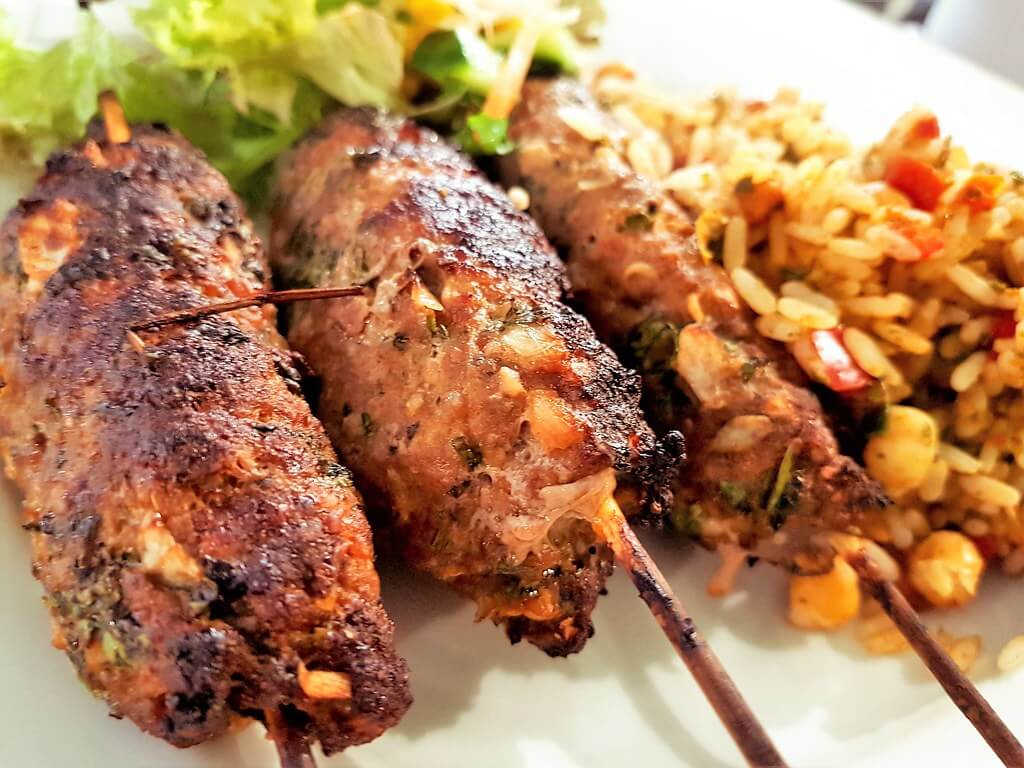
Chicken Malai Boti: Chicken Malai Boti is a creamy and mildly spiced dish made by marinating chicken chunks in a mixture of cream, yogurt, ginger-garlic paste, and spices like white pepper, cardamom, and nutmeg. The marinated chicken is skewered and grilled, imparting a tender and flavorful taste, often served as a starter or appetizer.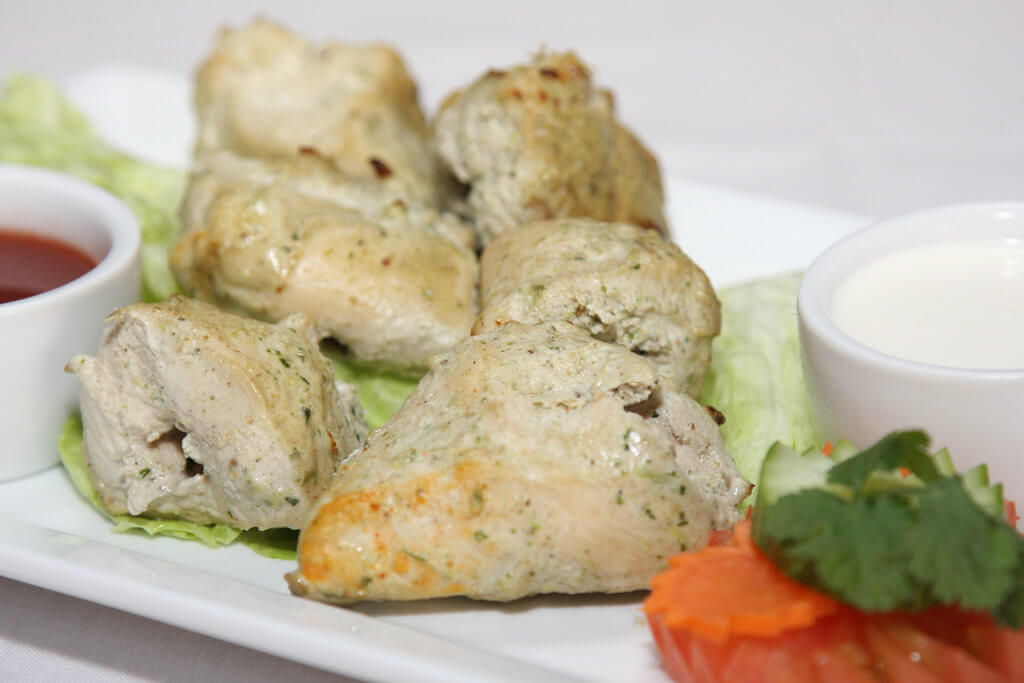
Tandoori Fish: Tandoori Fish is a dish where fish fillets, often from varieties like salmon or trout, are marinated in a blend of yogurt, spices like red chili powder, turmeric, and garam masala, along with ginger-garlic paste. The marinated fish is then roasted or grilled in a tandoor, resulting in a smoky, well-spiced, and flavorful preparation commonly served as a starter or main dish.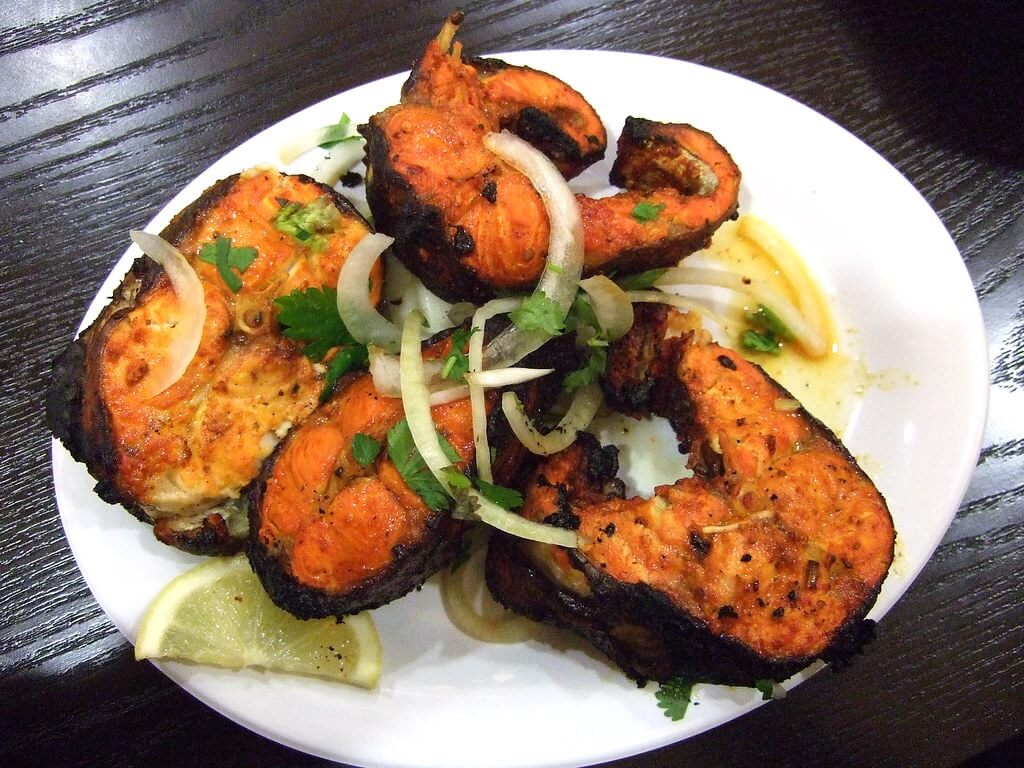
Chicken Tikka: Chicken Tikka consists of marinated chicken chunks seasoned with a blend of spices like cumin, coriander, paprika, and turmeric, mixed with yogurt and other flavorings such as lemon juice and ginger-garlic paste. The marinated chicken is skewered and grilled, resulting in tender, juicy, and smoky-flavored chicken tikka, often served as an appetizer or accompanied by naan and salad.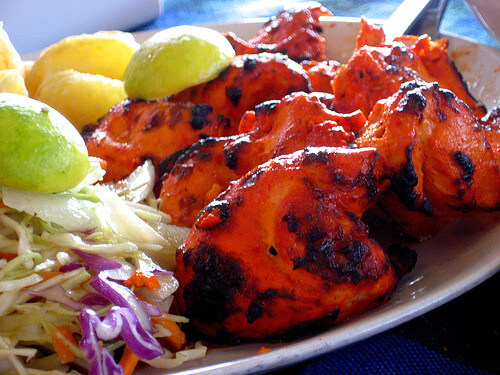
History and Culture
Culinary Heritage
Unraveling the Roots Food in Sukkur is deeply entrenched in the region’s historical tapestry, reflecting a vibrant convergence of cultural influences and culinary legacies. The culinary heritage of Sukkur traces its origins to ancient times, when the city served as a hub of trade and cultural exchange along the Indus River. Delve into the historical roots of Sukkur’s cuisine, exploring how various civilizations, including the Indus Valley civilization, Persian, Arab, and Mughal influences, have shaped its diverse gastronomy. This exploration unveils a mosaic of flavors that have evolved and mingled over centuries, resulting in the unique dishes that define the city’s palate.
Cultural Influences and Gastronomic Traditions The food in Sukkur mirrors the rich tapestry of cultural influences that have left an indelible mark on its culinary identity. Discover how the amalgamation of Sindhi, Balochi, Punjabi, and Mughal cuisines, among others, has contributed to the distinct flavors and cooking techniques prevalent in Sukkur’s food. Delve into the intricate nuances of spices, cooking methods, and indigenous ingredients that showcase the culinary diversity shaped by historical trade routes and cultural exchanges.
Evolution of Signature Dishes Traces the evolutionary journey of iconic dishes that have stood the test of time, witnessing adaptations and refinements while retaining their essence. Explore how recipes have been passed down through generations, adapting to changing tastes and preferences while preserving their authenticity. Through this exploration, witness the evolution of Sukkur’s signature dishes, such as Sindhi Biryani and Sajji, and understand the stories behind their enduring popularity.
Festivals and Food
A Tapestry of Celebration The festivities and celebrations in Sukkur play a pivotal role in shaping the local food scene, infusing it with vibrant colors and flavors. Explore how festivals like Eid-ul-Fitr, Eid-ul-Adha, and Urs of Shah Abdul Latif Bhittai influence Sukkur’s culinary landscape, where traditional dishes take center stage. Delve into the significance of these celebrations and the symbolic foods associated with them, offering a glimpse into the cultural significance of these culinary traditions. Discover how these special occasions become a celebration of flavors, food in Sukkur bringing communities together over shared meals and culinary rituals.
Tips and Tricks
Where to Eat
Savoring Authentic Flavors Unveil a culinary adventure by recommending a curated list of eateries, restaurants, and bustling street food vendors that encapsulate the essence of “food in Sukkur.” From local gems serving mouthwatering delicacies to vibrant markets offering delectable street food, guide readers to must-visit places that promise an authentic and immersive gastronomic experience. Highlight the ambiance, specialties, and must-try dishes at each location to help visitors navigate the diverse culinary landscape of Sukkur.
Cooking at Home
Bringing Sukkur’s Flavors to Your Kitchen Empower home chefs with easy-to-follow recipes for some of Sukkur’s iconic dishes. Provide step-by-step instructions and ingredient lists for preparing signature Sukkur dishes in the comfort of one’s kitchen. Share cooking tips, techniques, and insights into the key elements that define the authentic taste of these dishes. From Sindhi Biryani to Sajji, equip readers with the knowledge and confidence to recreate the flavors of Sukkur’s culinary heritage at home.
Ingredients
Essential Ingredients
Culinary Building Blocks Dive into the core elements that form the backbone of “food in Sukkur.” Explore the staple ingredients integral to Sukkur’s cuisine, including an array of spices, grains, meats, and vegetables. Discuss the significance of each ingredient, elucidating their roles in enhancing flavors, adding depth, and creating the distinctive aroma that characterizes Sukkur’s culinary creations. Shed light on the essential spices like cumin, coriander, turmeric, and cardamom, along with key grains, meats, and vegetables used in the region’s gastronomy.
Unique Flavors
Indulging in Distinctive Tastes Embark on a flavorful journey by delving into the unique and indigenous ingredients that lend an unparalleled taste to food in Sukkur. Uncover lesser-known ingredients specific to the region that contribute to the complexity and richness of local dishes. Explore how these indigenous elements, whether rare spices, specialty grains, or locally sourced meats and vegetables, play a pivotal role in crafting the distinct flavors that set Sukkur’s cuisine apart. Discuss their cultural significance and their irreplaceable role in shaping the authenticity of Sukkur’s culinary identity.
Sustainability and Local Sourcing
Embracing Sustainability
Explore the pivotal role of sustainable food practices in preserving the rich culinary heritage of Sukkur. Discuss the significance of embracing sustainable agriculture, ethical sourcing, and eco-friendly culinary practices in preserving the authenticity and quality of “food in Sukkur.” Highlight the importance of sustainable approaches in maintaining biodiversity, minimizing environmental impact, and ensuring the longevity of traditional food production methods.
Locally Sourced Initiatives
Shed light on restaurants, markets, or food in Sukkur that champion locally sourced and sustainable ingredients. Spotlight businesses dedicated to supporting local farmers, artisans, and producers, promoting the use of fresh, seasonal produce and ethically sourced meats. Showcase how these establishments prioritize sustainability, offering a glimpse into their commitment to preserving Sukkur’s culinary heritage while supporting the local community and environment.
Pairings and Recommendations
Beverages that Complement Sukkur’s Cuisine
Introduce a delightful array of beverages that harmonize with the flavors of food in Sukkur. Recommend traditional drinks like lassi, a refreshing yogurt-based drink, sugarcane juice that offers a sweet contrast, or aromatic chai (tea) that serves as a perfect accompaniment to the rich and spicy flavors of Sukkur’s cuisine. Explain how these beverages balance and enhance the dining experience, offering a burst of flavors that perfectly complement the diverse dishes.
Enhancing the Dining Experience
Provide suggestions for complementary dishes or food pairings that elevate the gastronomic journey in Sukkur. Recommend combinations of dishes that create a symphony of flavors, such as pairing spicy Sindhi Biryani with cooling raita (yogurt-based condiment) or enjoying succulent Sajji with freshly baked naan bread. Highlight how these pairings enhance the overall dining experience, allowing food enthusiasts to savor the intricate flavors and textures of Sukkur’s culinary delights.
Cultural Significance
Food Rituals and Customs
Delve into the intricate tapestry of food rituals and customs embedded in Sukkur’s cultural fabric. Explore the profound role that “food in Sukkur” plays in various cultural traditions and rituals. Discuss how certain dishes hold symbolic significance in religious ceremonies, festivals, or social gatherings, weaving a narrative of tradition and heritage. Uncover the rituals associated with preparing and serving food, highlighting their importance in preserving cultural identity and fostering a sense of belonging.
Community and Social Bonding
Examine how “food in Sukkur” acts as a catalyst for fostering strong communal ties and social cohesion. Detail the communal dining practices prevalent in Sukkur, showcasing how shared meals bring together diverse communities, transcending social barriers. Describe food-related events, such as potluck gatherings, community feasts, or charitable initiatives centered around food, that serve as platforms for fostering unity, promoting inclusivity, and strengthening social bonds among the people of Sukkur.
Conclusion
In essence, the vibrant tapestry of “food in Sukkur” embodies a cultural saga steeped in history, diversity, and flavors that resonate through generations. The culinary landscape of Sukkur, adorned with an array of savory delights and sweet indulgences, mirrors the city’s rich heritage and cultural amalgamation. From the aromatic allure of Sindhi Biryani to the succulent essence of Sajji, each dish carries the legacy of Sukkur’s historical roots and cultural influences.
The significance of food in Sukkur transcends mere sustenance; it’s a conduit of tradition, symbolism, and communal bonds. These dishes aren’t merely recipes; they’re living testaments to the city’s cultural tapestry, preserving traditions, and celebrating togetherness. The rituals, customs, and social gatherings surrounding food weave a narrative of unity, reflecting the spirit of Sukkur’s community.
As we conclude this exploration of Sukkur’s culinary marvels, we invite you to embark on your culinary odyssey. Experience the delightful symphony of flavors, immerse yourself in the warmth of communal dining, and savor the authenticity of Sukkur’s cuisine firsthand. Let the aromas and tastes guide you through an adventure that transcends the palate, offering a glimpse into the heart and soul of Sukkur’s food culture. Embrace the flavors, relish the traditions, and create your memories while indulging in the gastronomic delights that food in Sukkur graciously offers.

